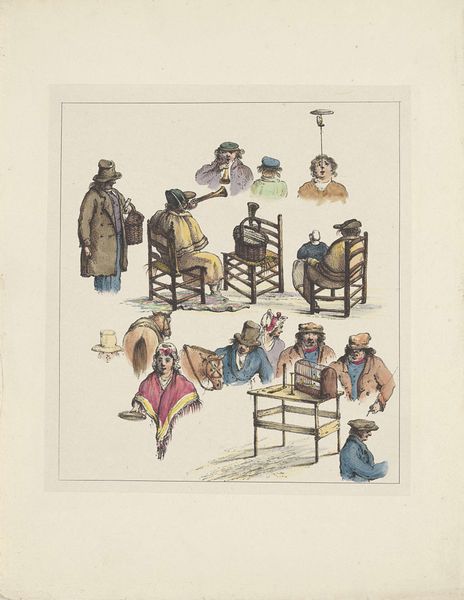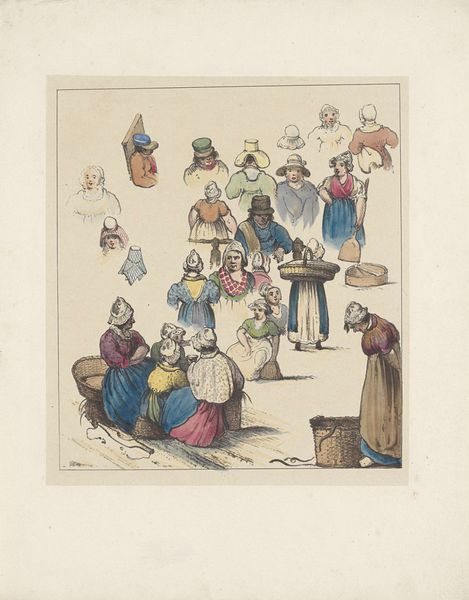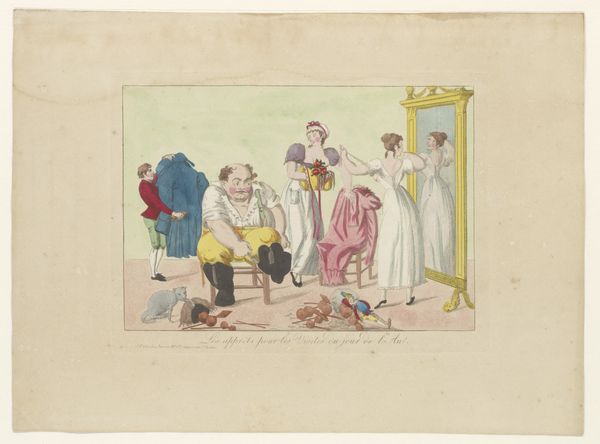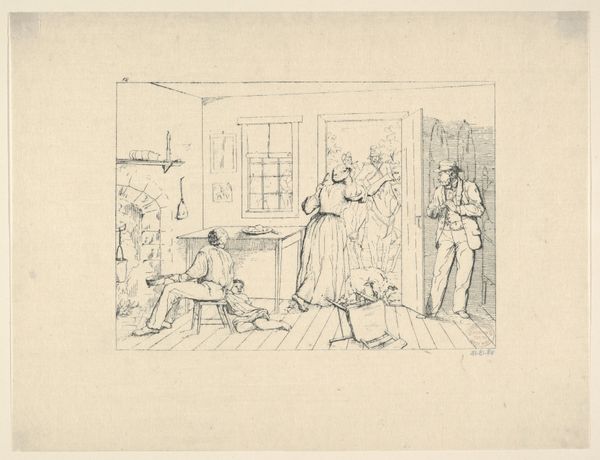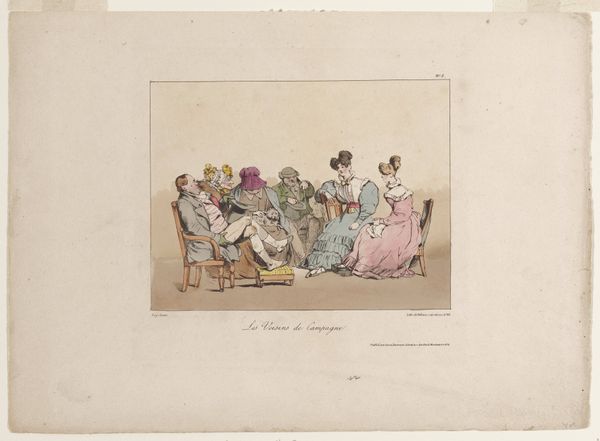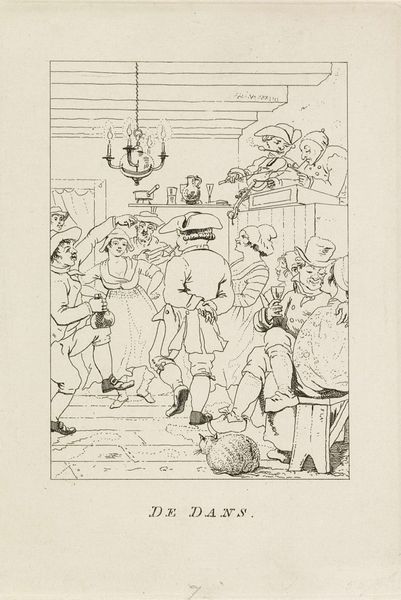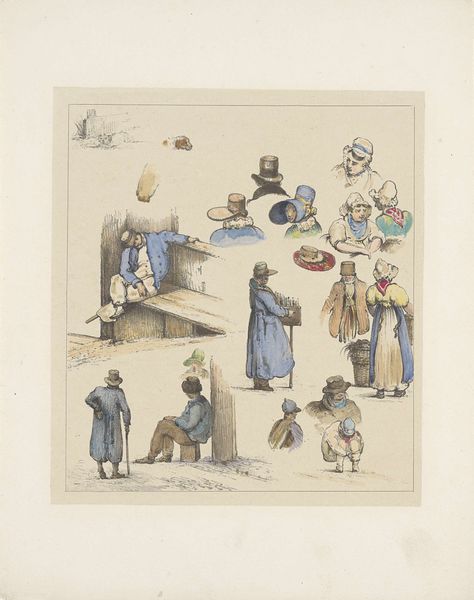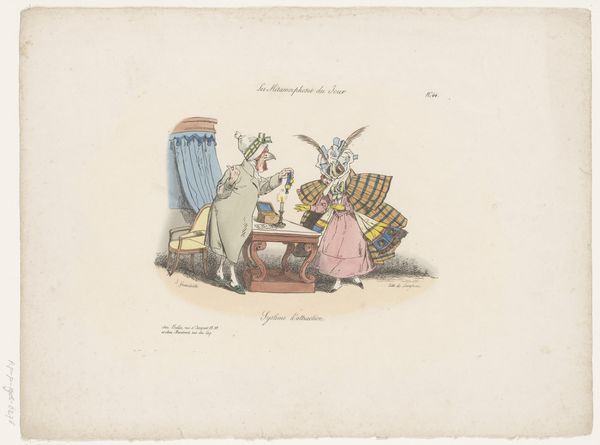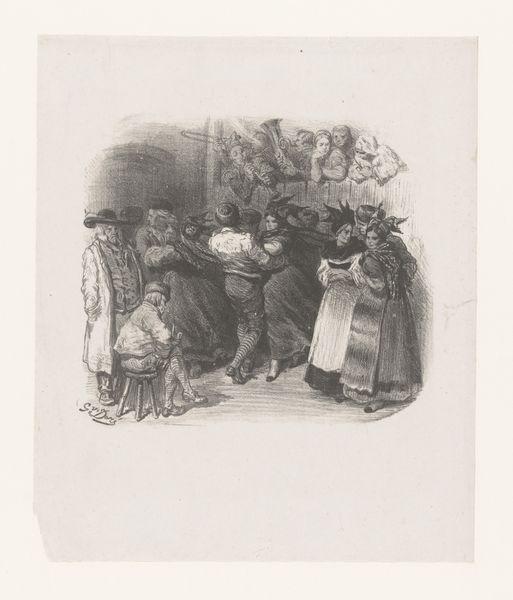
drawing, watercolor, pencil
#
drawing
#
figuration
#
watercolor
#
pencil
#
genre-painting
Dimensions: height 340 mm, width 270 mm
Copyright: Rijks Museum: Open Domain
Curator: Christiaan Andriessen’s "Figuurstudies (zesde blad), 1833," a work combining pencil and watercolor, strikes me immediately in terms of its presentation of labor. How do you read its visual language? Editor: It feels like a snapshot of everyday life. A variety of people are depicted – some playing instruments, some carrying baskets, others just seated. I notice the consistent use of hatching and the simple application of color, it's mostly outlines with colour sparsely added. What stands out to you, thinking about this work in terms of its material making and context? Curator: What's fascinating is the artist's process. Consider Andriessen's choice to combine pencil sketches with delicate watercolors. The layering suggests a deliberate act of building up images. Given the context of 1833, how might we interpret these depictions of figures and everyday activities, perhaps even genre painting, in relation to the contemporary social landscape? Editor: Maybe it’s about class distinctions? Some figures appear to be working or selling goods, while others are simply occupying space, like the seated men. The details in the objects – the baskets, the musical instruments – seem significant, emphasizing certain activities over others. Curator: Exactly. The act of drawing itself becomes a form of labor. He meticulously documented the lives of the common folk. Think about the chairs - what's the meaning embedded in such common items? Are they uniformly built or reflecting diversity based on function and maker? Do we learn something by considering this work beyond the traditional notions of "high art?" Editor: That's a really interesting perspective! Thinking about it as a document of labor itself, and about the materiality of the subjects, gives it a new dimension. It definitely broadens its significance beyond just aesthetic appeal. Curator: Absolutely. The drawing compels us to recognize and value the representation of work, materials and labor in the everyday world, not just its artistic execution. A nice peek into a moment of history viewed in aggregate.
Comments
No comments
Be the first to comment and join the conversation on the ultimate creative platform.
